Zigzag goldenrod (
Solidago flexicaulis) is an eastern U.S. native perennial that can be found growing in shady sites, including prairies, meadows, woodlands, old fields and woodland understories and edges. It is an extremely reliable and versatile plant that does not require attention, and it tolerates most soil types, shade to full sun, and dry to moist conditions.
Bright yellow flowers emerge along the zigzagging flower stalks in August and continue to open into October. The flowers attract a number of pollinators and insects, including bees, flies, beetles, wasps, butterflies and moths. When forage becomes limited in the fall months, zigzag goldenrod helps to provide food for bees provisioning their nests and butterflies preparing for their southward migration.
Not in the eastern U.S.? Browse plants native to other regions of the U.S.
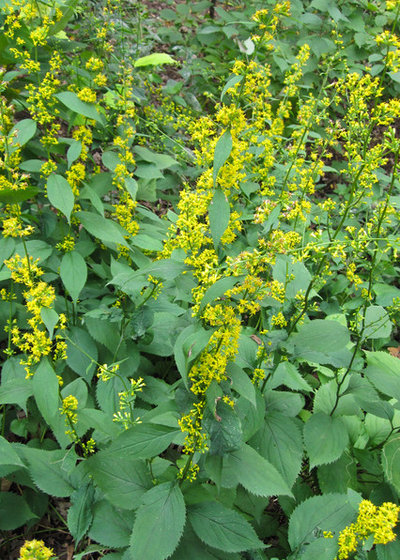
Holm Design & Consulting LLC
Botanical name: Solidago flexicaulisCommon name: Zigzag goldenrod
Origin: Native to eastern North America
Where it will grow: Hardy to minus 45 degrees Fahrenheit, or minus 43 degrees Celsius (USDA zones 2b to 8a; find your zone)
Typical plant communities: Dry to moist woodlands, woodland edges, old fields and prairies
Soil requirement: Dry to moist, sandy-loam to clay-loam soil
Light requirement: Shade to full sun
Mature size: 2 to 4 feet tall and 18 to 24 inches wide
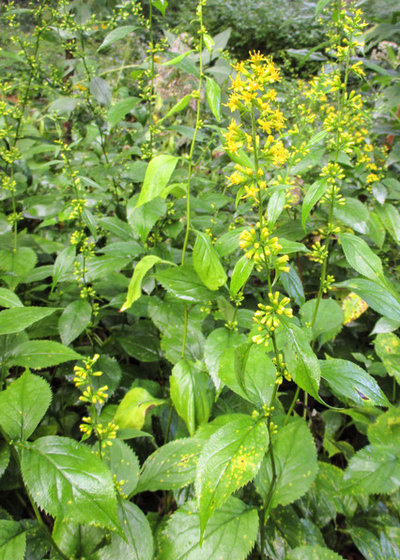
Holm Design & Consulting LLC
Benefits and tolerances: Tolerates shade and dry conditions; deer will browse new flower stalks in early summer but often leave the plant alone after that
Seasonal interest: Bright yellow flowers open in mid-August through September; has dark green, sharply serrated leaves
When to plant: Spring or fall; potted plants and seed are available from most native-plant nurseries in areas where it occurs
Shown: The zigzagging flower stalk
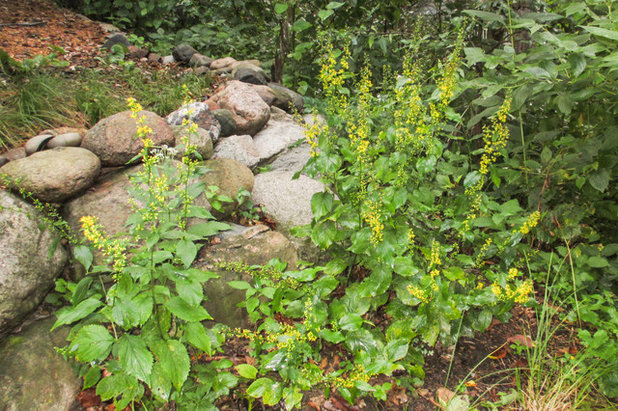
Holm Design & Consulting LLC
Distinguishing traits. Zigzag goldenrod has an upright form, with tall flower stalks that zigzag and bear a raceme of yellow flowers.
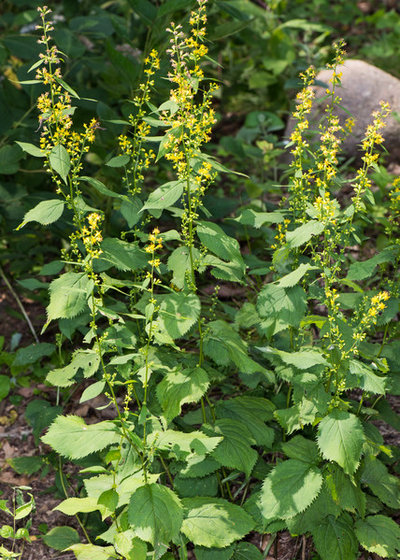
Holm Design & Consulting LLC
How to use it. This robust native perennial can be used in any shady site, including in a formal shade garden, bordering a woodland or naturalized in a deciduous woodland. Mass it under a shade tree in a lawn.
Combine zigzag goldenrod with other shade-tolerant native perennials, including great blue lobelia (
Lobelia siphilitica), bigleaf aster (
Eurybia macrophylla) and sweet Joe Pye Weed (
Eutrochium purpureum).
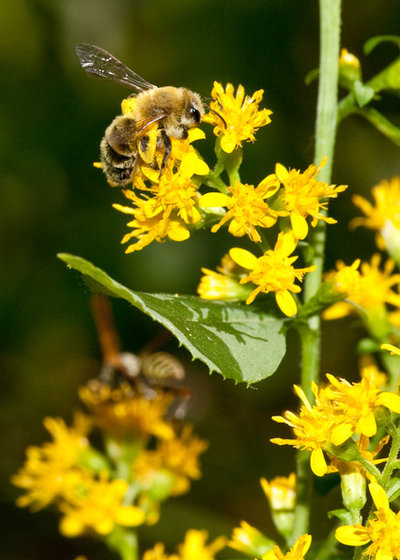
Holm Design & Consulting LLC
Planting notes. Zigzag goldenrod is rhizomatous and spreads slowly by forming dense clusters. It is not an aggressively spreading goldenrod like Canada goldenrod (
S. canadensis). And this native plant is so versatile, tolerating a wide range of soil types and shade to full-sun conditions.
Seed can be collected and resown directly into the desired location in the fall on top of the soil; do not cover the seed, as it requires light to germinate. Collected seed can also be stored in a cool, dry location over the winter. Cold-stratify the seed in damp sand in the fridge 60 days before sowing it in pots, or directly in the ground in the spring.
Be Your Own Wildflower Nursery
Shown: A female mining bee (
Andrena hirticincta), a specialist of goldenrod and aster flowers
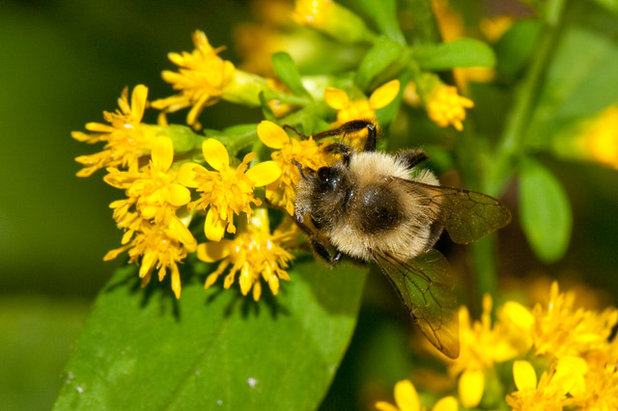
Holm Design & Consulting LLC
Pollinator notes. Goldenrods are often blamed for causing allergies, but ragweed — a wind-pollinated plant that flowers at the same time as many goldenrod species — is the true culprit. Goldenrod flowers are pollinated by insects, including bees, flies, wasps, beetles, butterflies and moths.
The bright yellow composite flowers offer both nectar and pollen to visiting insects. For migrating insects, including some butterflies and moths, this is an important food source for their upcoming aerial journeys. The flowers are also an important source of pollen for several types of mining bees (
Andrena) that specialize on collecting pollen from goldenrods and asters.
Shown: A bumblebee foraging on the flowers
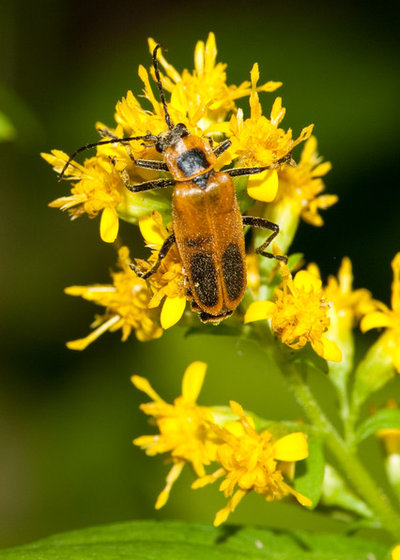
Holm Design & Consulting LLC
Shown: Soldier beetles, like this one, are common flower visitors in late summer and fall.
More How to Design a Garden for Native Bees
Browse plants native to other regions of the U.S.





